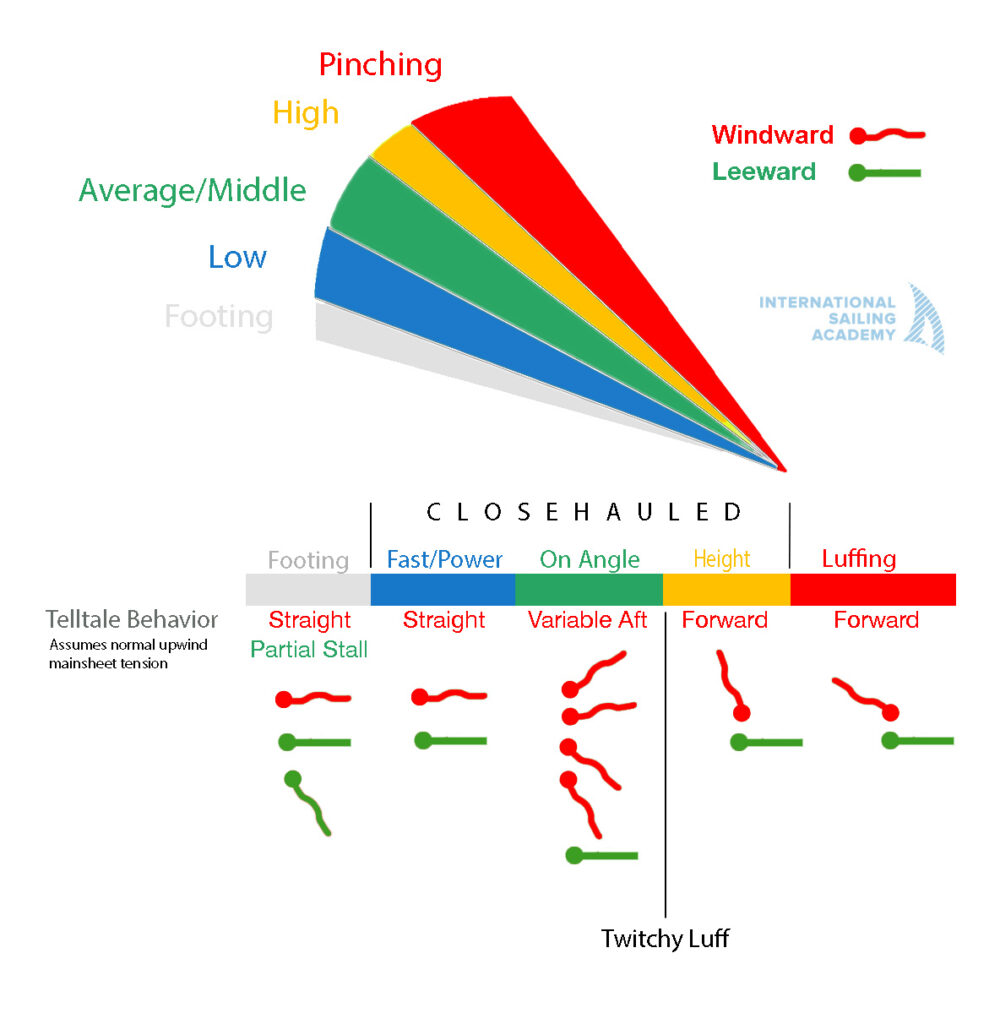Sailing a precise angle upwind is paramount for good boat speed. Angle is critical to ensure optimal VMG and airflow and water flow on the foils. Without the proper angle upwind your boat reduces in performance dramatically and suddenly, and without correct telltale placement and use of it, it can be difficult to maintain a perfect angle.
Being skilled at reading the water and wave angles helps keep you on track. Understanding gust and lulls and how they affect the direction of the apparent wind also helps. But most importantly, having good telltale placement will ensure your sail is always working properly. It’s important to understand what to look for on your telltales.
When asked, 95% of people who visit ISA give the incorrect answer when asked what the telltales should be doing. Sticking them on in an arbitrary position is also incorrect. Also after some regular use, the luff of the sail will be very deep, and the telltales can be moved slightly closer to the mast to get the same visual cues. Too close to the mast and the separation bubble will make them dance too frequently.

Here’s the ideal placement:
Measure from the foot of the sail, and all the way at the front of the luff sleeve.
Full Rig: 31” up, 23” in. & 60” up, 17” in.
Radial: 31” up, 20” in. & 53” up, 20” in.
4.7 Rig: 27” up, 19” in. & 47” up, 15” in.
As seen in the article, Focus on Angle, ideal telltale behavior would have the upper set of telltales in the green and sometimes yellow zone. The bottom telltales would be mostly blue. The trick is to be on the exact angle where the upper windward telltale flicks forward slightly at the crest of the waves.
Bigger swell will be confusing because boat speeds may increase so much from surfing the backside of waves that both telltale sets are in the yellow or even red zone for moments. It’s important to recognize if this is momentary because correcting by bearing away could result in a stall while climbing the next set of waves.
In flatter or choppier conditions, being diligent in using your telltales to sail perfect angles can result in huge speed gains. We recommend looking at them every 5-7 seconds. Also, look every time you feel something change. For example, a loss in power doesn’t always require a change in direction.
Keep your sail happy, and sail fast!